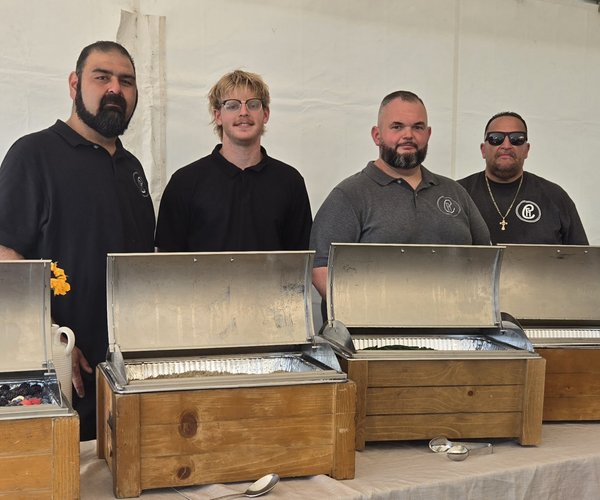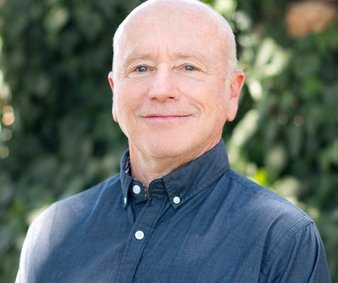Thursday evening’s special workshop on the future of downtown Turlock drew in an eager audience of community members interested in how the area will face continued growth.
Approximately 40 people joined the Planning Commission as the planning department invited guest speaker Stefan Pellegrini of Opticos Design to share his recommendations for the development of downtown Turlock.
Having spent a day and a half overlooking the downtown area and City guidelines, Pellegrini said that he was impressed with what Turlock has to offer.
“The buildings that you have downtown are wonderful and unique,” said Pellegrini. “It is a real special group of buildings that you have in the downtown area and it is something to build on.”
With a focus primarily on the expansion of building height limits downtown, the discussion of how a higher density in the area would affect the city brought forth many questions from audience members, who were largely in support of taller buildings.
While some residents expressed concerns about higher crime rates due to a higher density, Planning Director Debbie Whitmore shared that the issue of crime had been discussed during the General Plan update that occurred in 2012.
“We worked alongside the Turlock Police Department during the General Plan discussions,” said Whitmore during the workshop. “The police department believes that a higher density in certain areas would actually help as it would provide a more compact area to serve, thus giving them the ability to serve much better, so they were in favor of compact development.”
Others shared that growing “up” instead of “out” would help preserve the area’s precious farmland, as agriculture continues to be a driving force in Turlock’s economic makeup.
As part of the meeting, Laura Podolsky of the Local Government Commission – a non-profit based in Sacramento dedicated to sharing urban planning practices – shared numerous trends that should be considered while Turlock continues to plan for population growth and development.
“The next 30 years will be fundamentally different than the last,” said Podolsky. “Things change and planning helps us prepare for that change.”
In 20 years, Podolsky shared that 80 percent of Stanislaus County’s demographics will be made up of adults ages 65 and higher, and young adults in their 20s and 30s.
“These age groups will have a significant influence in your market,” said Podolsky. “And trends show that young professionals prefer central city locations. By 2018, there will be 10,000 new jobs added to Stanislaus County. You have to ask yourself, how are we going to attract young professionals that have this ‘Live first, Work second’ mantra?”
According to Podolsky, recent studies have shown that younger people are decreasingly getting their drivers licenses or purchasing vehicles — a trend that is important to consider while planning urban development.
“Staying rural and limiting density can have unexpected consequences,” said Podolsky. “There is a heavy reliance on vehicle transportation that is created, which also adds to air pollution. In the San Joaquin Valley, four more times as many people die from air pollution than in traffic fatalities.”
With the trends pointing towards making the downtown area a central hub that will draw in young professionals, Podolsky stressed the importance of maintaining the character that the district already has.
“You want to create a place that you love,” said Podolsky. “Which is why I’ve heard your downtown referred to as the ‘heart of the city’ — it’s because you love it.”
Pellegrini, who has worked on revitalizing small rural towns and inner-city areas throughout the nation, also echoed Podolsky’s admiration of Turlock’s downtown character.
“Your downtown naturally has a quarter-mile radius and a 5-minute walk structure,” said Pellegrini. “I would recommend maximizing the use of your historic fabric.”
While the downtown core district, which runs along the Main street strip mostly, currently has a height limit of 60 feet, many of the buildings are much smaller than this. According to Whitmore, buildings in the core could technically reach as high as 75-feet before having to be approved by the Planning Commission. Other height limits around the area differ depending on the specific location, but are generally limited anywhere between 35 and 55 feet.
“I didn’t realize before that we could build buildings that high downtown,” said planning commission chair Mike Brem. “But I’m happy to hear that we do have some flexibility.”
After spending time in the downtown area, Pellegrini found that if the City wanted to consider high-rise development for residential structures such as apartment complexes or mixed use buildings, the south east portion of the district might be the most viable area. He noted Golden State Boulevard and Center Street as being the “cross-axis” of downtown that currently does not have any residential activity, but could certainly support it should the City consider that option.
As a general rule of thumb, Pellegrini said that a buildings height should not be much taller than the width of the adjacent street, creating a 1 to 1 ratio, as to avoid casting shadows on the sidewalk on the opposite side of the street.
“The wider streets in Turlock’s downtown are where I would recommend considering making buildings taller,” said Pellegrini. “With a wider street, you can have buildings going up to about 65-feet.”
Although the purpose of the meeting was not to make any final decisions on where taller buildings might be considered in the future of downtown development, it created an environment for both residents and city officials to work together to share ideas on where Turlock is headed.
It is not just Turlock residents who are looking at the future of Turlock’s downtown, however, as Ceres Chamber of Commerce Vice President Renee Ledbetter shared that her own city was looking to Turlock for direction.
“We are looking to Turlock as a model for our own downtown,” said Ledbetter. “We think that you are doing a great job, and continue to look at Turlock as a model for our own development in Ceres.”
Although taller buildings may not be in the near future for downtown Turlock, the Planning Commission is dedicated to keeping the area a vibrant location for everyone to enjoy.
“This may not be happening in 2 to 5 year, it’s definitely down the road,” said Brem. “But we will continue to look at it. Sometimes we take our downtown for granted. It is beautiful and outsiders love it. We need to find ways to maintain that.”
The Planning Commission will also be holding a special meeting on mobile food vendors in downtown Turlock at 6 p.m. on Dec. 5.









